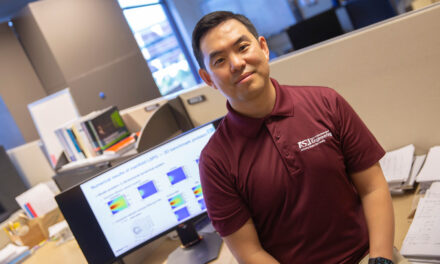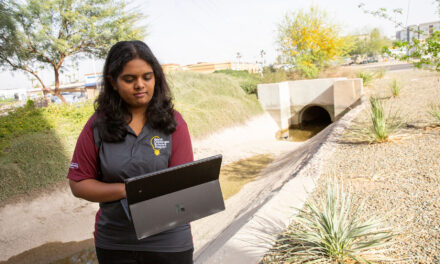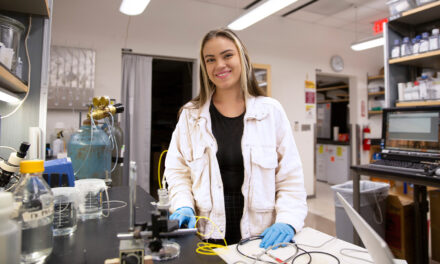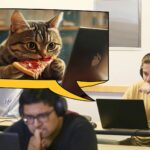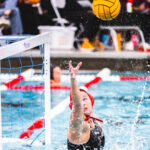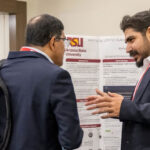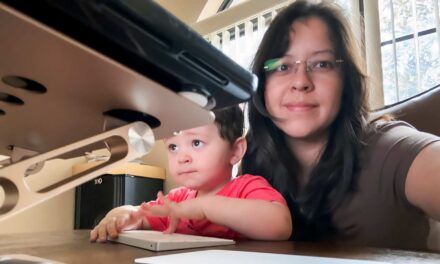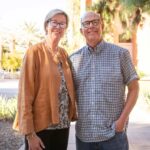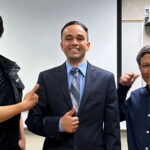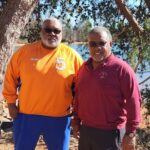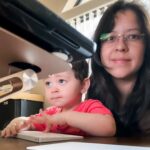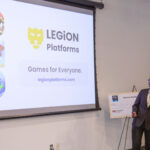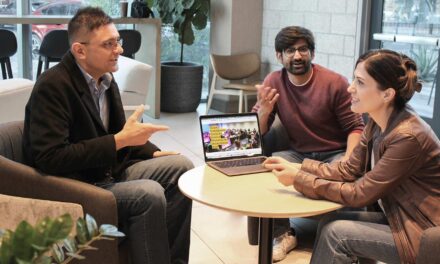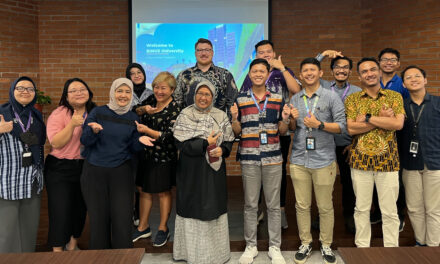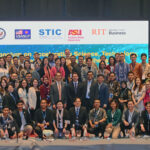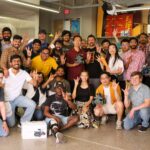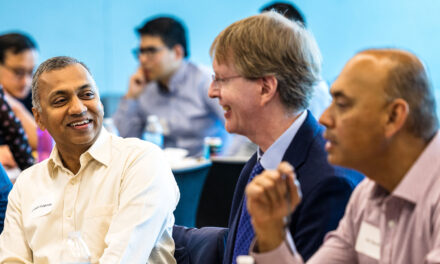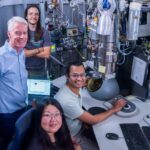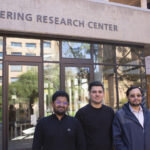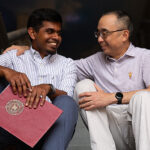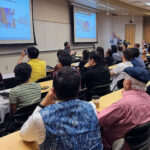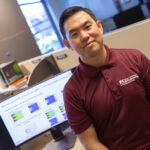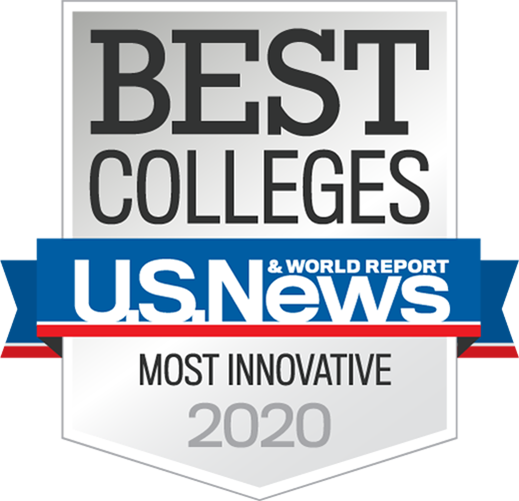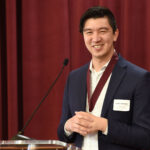
Meet student researchers improving health care, VR and more

This article is part one of a two-part series highlighting student researchers presenting at the Spring 2025 Fulton Forge Student Research Expo on Friday, April 25, 2025. Read part two and learn more about the expo.
Improving brain electrical stimulation, reducing power consumption of artificial intelligence tools, creating a virtual reality environment for fluid dynamics education, enabling wireless drone charging and investigating security risks of video game cheat programs are just some of the ways Arizona State University students are addressing real-world challenges through hands-on research.
Undergraduate and graduate students in the Ira A. Fulton Schools of Engineering at ASU have several opportunities to conduct use-inspired research. Through individual projects mentored by Fulton Schools faculty members, students apply their classroom knowledge, build new skills and forge meaningful advances in the research themes of data science, education, energy, health, security, semiconductor manufacturing and sustainability.
In the Fulton Undergraduate Research Initiative, also known as FURI, and the Master’s Opportunity for Research in Engineering, or MORE, programs, participants conceptualize ideas, develop plans and investigate research questions during a semester.
Students participating in the Grand Challenges Scholars Program, or GCSP, can apply for additional funding to conduct research through the GCSP research stipend program. Conducting research is one part of the rigorous GCSP competency requirements designed to prepare students to solve the world’s most complex societal challenges.
These three programs enhance students’ ability to innovate, think independently and engineer solutions for their communities. They also benefit from the technical and soft skills they gain, like networking and time management, which prepare them for their careers and the pursuit of advanced degrees.
Each semester, students who participate in FURI, MORE and the GCSP research stipend program are invited to present their findings at the Fulton Forge Student Research Expo. Learn more about five of the researchers participating in the spring 2025 event.
Meet them and more than 200 other student investigators at the Spring 2025 Fulton Forge Student Research Expo, which is open to the public, on Friday, April 25, from 1 to 3 p.m. in the Memorial Union on the ASU Tempe campus.

Camila De Barros Leandro conducts an experiment in a lab. Photographer: Erika Gronek/ASU
Camila De Barros Leandro
Camila De Barros Leandro wanted to enhance her journey as a biomedical engineering undergraduate student through research. Under the guidance of her faculty mentor Jit Muthuswamy, a Fulton Schools biomedical engineering associate professor, De Barros Leandro is investigating the causes of brain cell damage during electrical stimulation to improve neurological therapy.

Reeyan Choudhury uses a laptop in front of power lines. Photographer: Erika Gronek/ASU
Reeyan Choudhury
After learning about FURI in his FSE 100 Introduction to Engineering class, computer systems engineering undergraduate student Reeyan Choudhury decided to submit a proposal to explore his fascination with artificial intelligence, or AI. Under the guidance of his FSE 100 instructor Adwith Malpe, a Fulton Schools assistant teaching professor of computer science and engineering, and Ryan Meuth, a Fulton Schools associate teaching professor of computer science and engineering, Choudhury aims to reduce the power consumption of large language model AI tools.
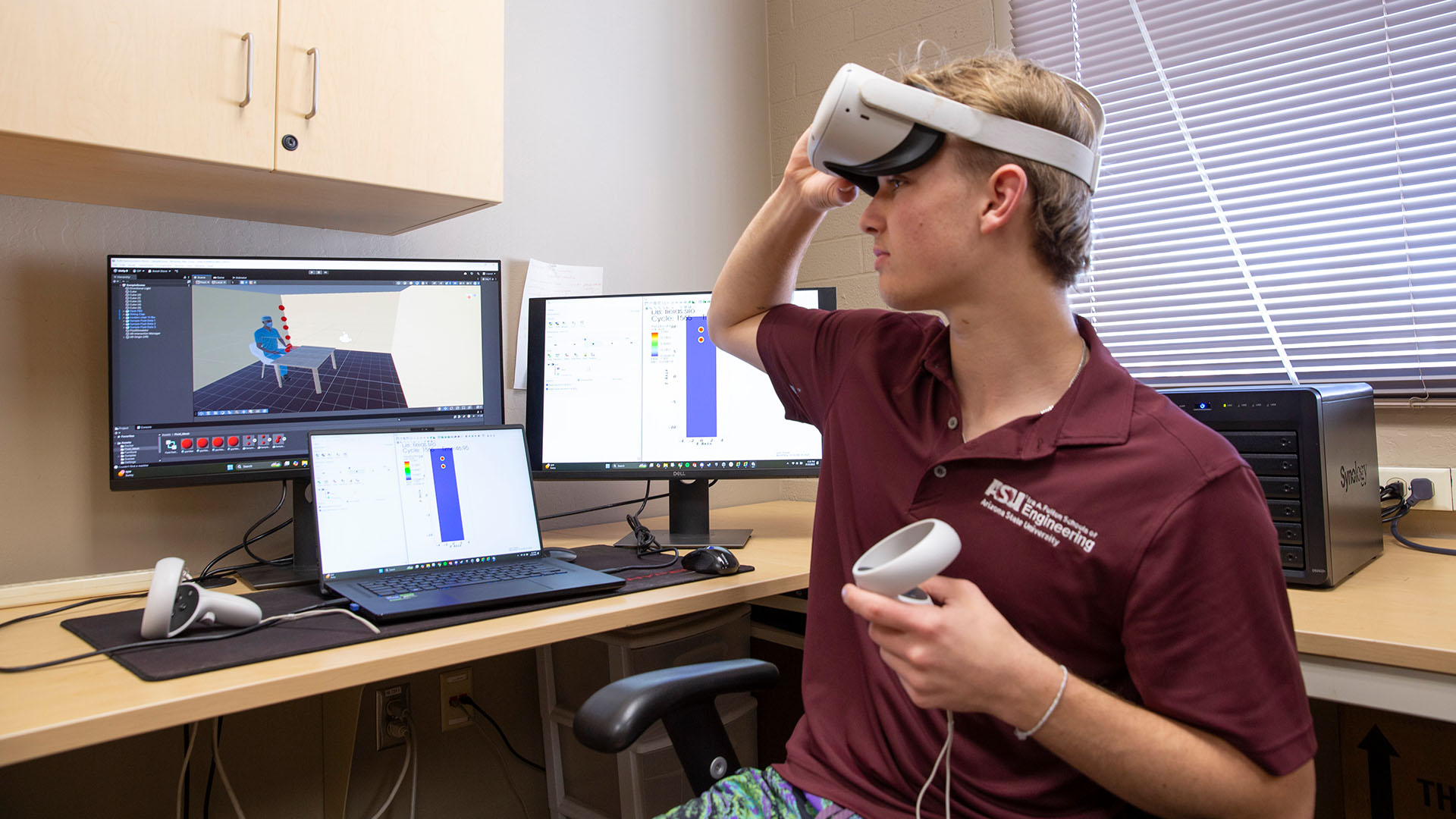
Dean Puckett works on a computer program and virtual reality equipment. Photographer: Erika Gronek/ASU
Dean Puckett
Dean Puckett, a Fulton Schools mechanical engineering undergraduate student, chose to participate in FURI to apply the knowledge he gained in his classes in a hands-on setting. Puckett’s project, conducted under the supervision of Mohamed Kasbaoui, a Fulton Schools assistant professor of mechanical and aerospace engineering, focuses on creating a virtual reality, or VR, environment to help learners better understand fluid dynamics.
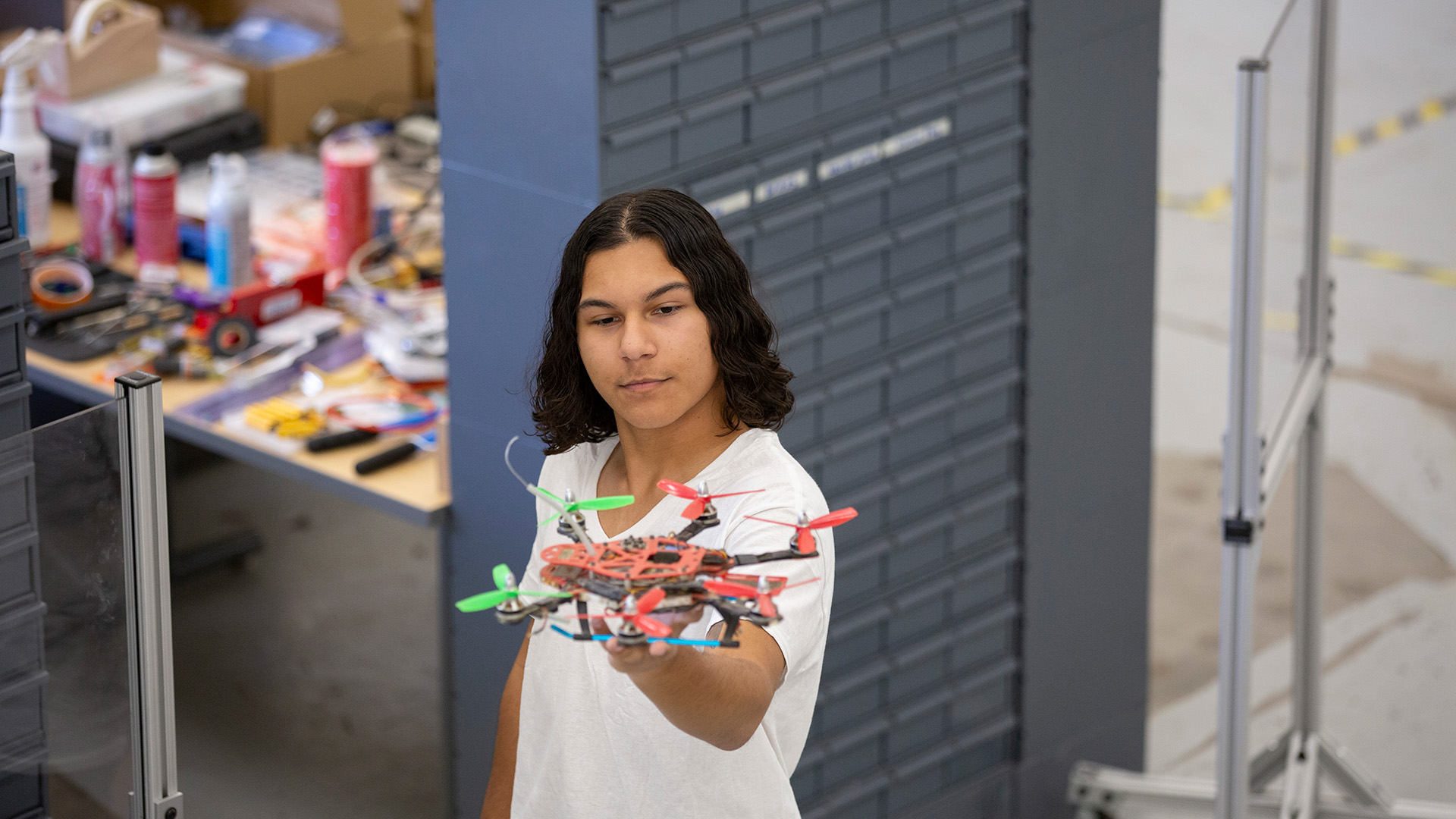
Sam Alfaro observes a drone in a lab. Photographer: Erika Gronek/ASU
Sam Alfaro
Sam Alfaro, an undergraduate student majoring in engineering, has always been fascinated with the wireless movement of electricity and its applications to improve sustainability. He pursued this field through his FURI project, which focuses on how to wirelessly charge a drone battery following its use, under the guidance of his faculty mentor Zhicheng Guo, a Fulton Schools assistant professor of engineering.
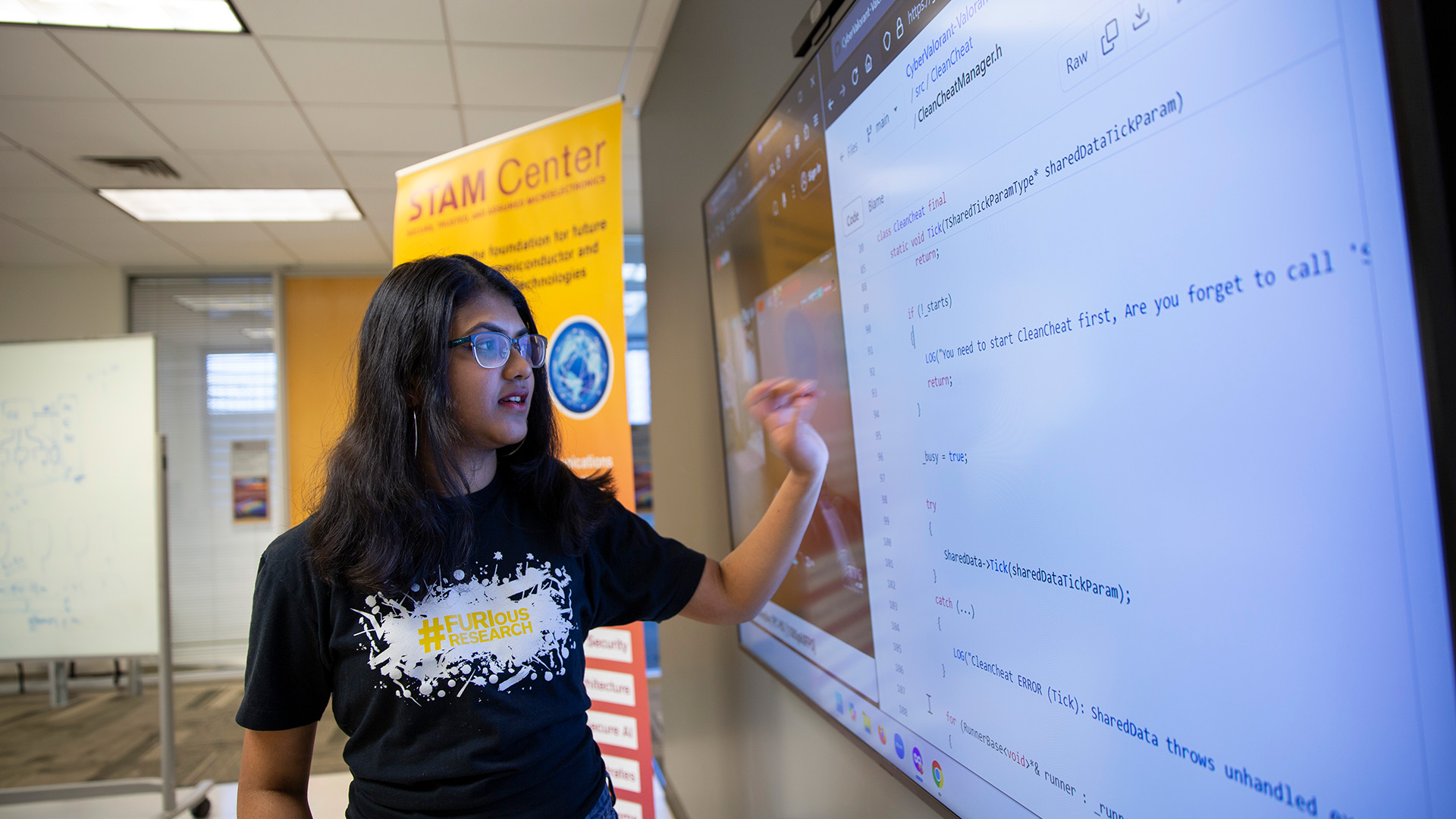
Sridhana Murugan looks at computer code displayed on a screen. Photographer: Erika Gronek/ASU
Sridhana Murugan
Sridhana Murugan, an undergraduate student majoring in computer science with an emphasis on cybersecurity, saw FURI as an opportunity to gain mentorship and research experience applicable to issues crucial to a secure online future. Murugan is investigating the security risks behind video game cheating under the supervision of Ozgur Ozmen, a Fulton Schools assistant professor of computer science and engineering.


